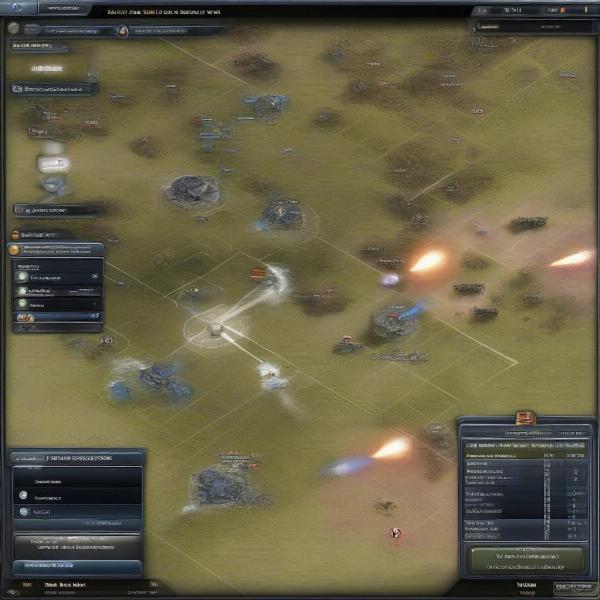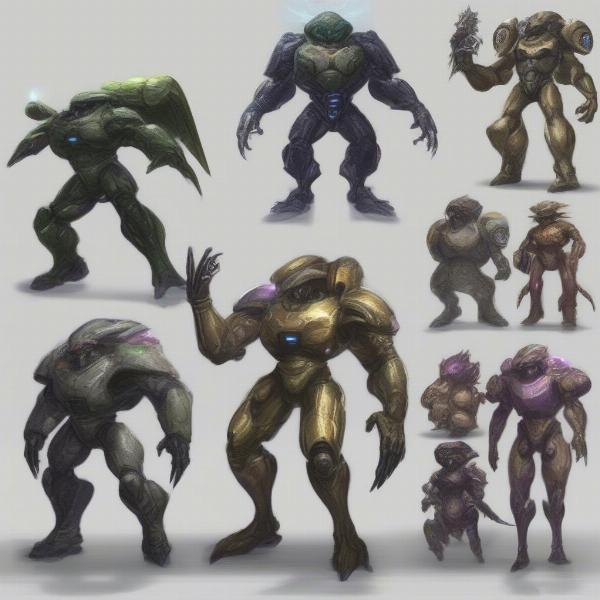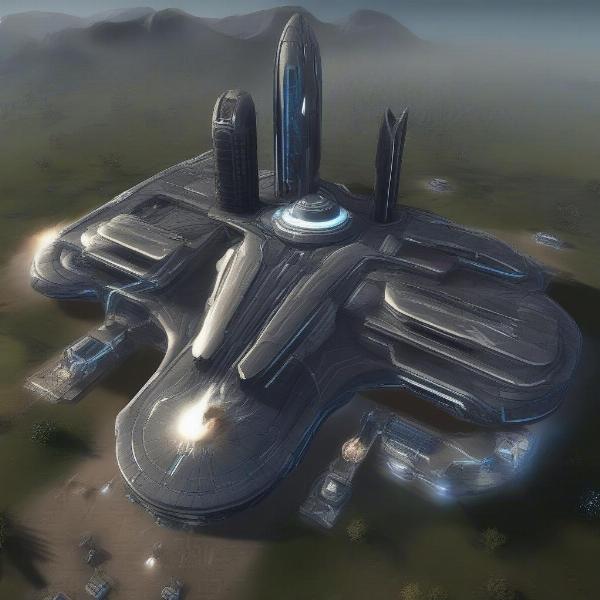Welcome to supremeduelist.blog, your go-to source for in-depth game analysis. Today, we’re diving deep into the strategy realm with a retrospective look at the Universe at War game, a real-time strategy title that, despite not achieving mainstream popularity, offered unique mechanics and a compelling sci-fi narrative. This article will explore the game’s core mechanics, factions, strategies, and why it maintains a cult following.
Universe at War: Earth Assault, released in 2007, attempted to innovate within the crowded RTS genre. Its unique features, including tactical mode and faction asymmetry, provided players with new approaches to strategy. It’s a game that deserves a closer look, and that’s exactly what we’ll provide.
The Core Gameplay of Universe at War
At its heart, Universe at War is a real-time strategy game where players manage resources, build bases, and command armies to defeat their opponents. However, several key features set it apart. The tactical mode allows players to pause the game and issue complex orders, adding a layer of strategic depth not often seen in other RTS titles of the time. This mode encourages thoughtful planning over frantic clicking.
 Universe at War game tactical view
Universe at War game tactical view
Resource management is also handled differently. Instead of traditional mining, players capture and upgrade nodes scattered across the map, creating strategic points that become vital for expansion and defense. This system incentivizes territorial control and aggressive expansion, rather than a passive resource grind. This is vastly different from resource-gathering games, like [grand theft auto chinatown wars ds game] which focuses more on urban exploration.
Faction Asymmetry: A Defining Feature
Perhaps the most significant aspect of Universe at War is its highly asymmetrical factions. Unlike many RTS games where factions share similar units and playstyles, each of the three main factions in Universe at War – the Novus, the Hierarch, and the Masari – are distinctly different.
- The Novus: These are the tech-savvy faction, relying on fast-moving, energy-based units and teleportation technology. Their unique ability to generate energy from the map adds another strategic consideration.
- The Hierarch: With their imposing walker units and focus on brute force, the Hierarch are the heavy hitters. They favor slow, powerful advances and area-of-effect attacks.
- The Masari: The Masari possess the most unique mechanics. They can shift between light and dark forms, with each offering different unit abilities. They are a highly adaptable and unpredictable faction.
This level of asymmetry makes each faction feel like a completely new experience, greatly increasing the game’s replayability. The variety of play styles also means that no two matches ever feel the same, requiring players to adapt and learn new tactics for each opponent they face.
Base Building and Unit Progression
Base building in Universe at War is also simplified, with pre-set base structures that can be upgraded and expanded. This streamlined approach focuses more on unit production and strategic positioning. Units also gain experience and upgrades through combat, creating persistent armies that require strategic protection and investment. This is unlike other strategy games such as [buy star wars x wing miniatures game], where units remain static until replaced.
Strategies and Tactics in Universe at War
The asymmetrical nature of the factions encourages a diverse range of strategies. Novus players typically focus on hit-and-run tactics, using their speed and teleportation to harass enemy bases and avoid direct confrontation. Hierarch players, on the other hand, favor slow, methodical advances, using their powerful walker units to overwhelm the opposition. Masari players must master their shifting abilities to maintain a balance between adaptability and aggression.
 Universe at War game Masari units
Universe at War game Masari units
Tactical mode is crucial for executing advanced maneuvers. This feature allows players to plan complex attacks, coordinate flanking maneuvers, and precisely target enemy units. Mastering tactical mode is often the key to victory, separating casual players from experienced veterans. According to game strategist, Anya Sharma: “Tactical mode is what elevates Universe at War beyond a typical RTS. It’s not just about unit count, it’s about the strategic deployment of those units.”
The Importance of Resource Nodes
Control of resource nodes is paramount in Universe at War. These nodes not only provide the necessary resources for unit production but also serve as strategic chokepoints. Capturing and holding these nodes is crucial for expanding your power base and limiting your opponent’s growth. The dynamic nature of node capture and upgrading adds another layer of strategic depth.
Why Universe at War Remains Relevant
Despite its age, Universe at War still holds a special place in the hearts of many RTS fans. Its unique mechanics, asymmetrical factions, and tactical depth offer a compelling alternative to mainstream RTS titles. Furthermore, the game’s sci-fi narrative, while not the main focus, provides a compelling backdrop for the strategic battles. The innovative gameplay is what sets it apart, especially when compared to more traditional franchise, such as [are the star wars games canon].
The Modding Community
The active modding community has helped extend the game’s lifespan, introducing new units, factions, and gameplay tweaks. This dedication from the fan base demonstrates the game’s enduring appeal and ability to provide unique gaming experiences. These mods have breathed new life into the game, allowing for constant experimentation and variation.
The Learning Curve
One reason for the game’s cult following may also be its relatively steep learning curve. While the core mechanics are easy to grasp, mastering the nuances of each faction and utilizing tactical mode effectively requires time and dedication. As Professor Liam Chen, a history of strategy games analyst notes, “The complexity of Universe at War is precisely what makes it so rewarding. There’s always something new to learn and master.”
 Universe at War game Novus base
Universe at War game Novus base
The high degree of challenge means that every victory feels earned. It’s not a game for casual players looking for a quick fix. It rewards strategic thinking, adaptability, and dedication, something many gamers find incredibly satisfying.
Conclusion
The Universe at War game remains a testament to innovation within the real-time strategy genre. Its asymmetrical factions, tactical mode, and unique resource system continue to offer a compelling and challenging gaming experience. It’s a game that deserves more recognition for its bold design choices and dedication to strategic depth. While it didn’t reach the heights of some other titles of its era, Universe at War has carved a unique place in gaming history, thanks to its dedicated fan base and continued relevance. On supremeduelist.blog, we aim to bring you analysis that not only highlights well-known games but also explores those hidden gems that have shaped the industry. Explore more strategy-focused content on our blog and discover a new classic today. If you’re looking for unique strategic gameplay, dive into Universe at War.
Leave a Reply